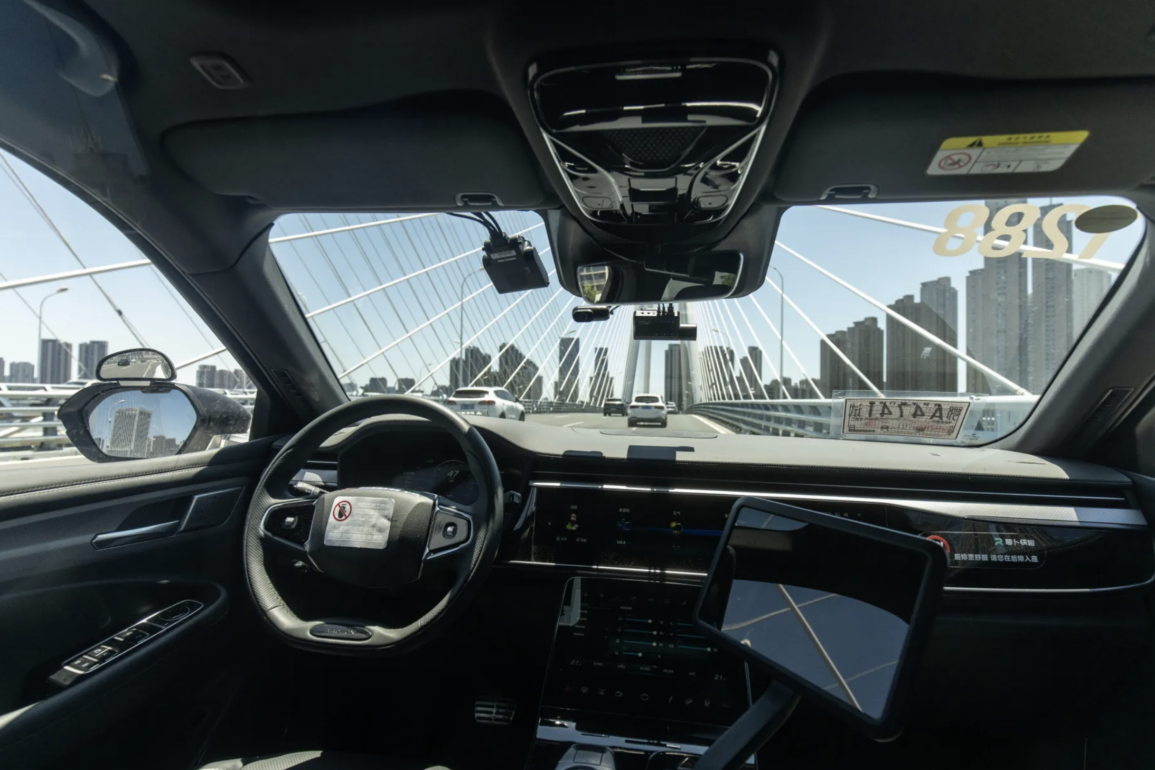Chinese autonomous vehicle companies are rapidly accelerating their global growth, outpacing major U.S. competitors such as Waymo and Tesla. Industry leaders increasingly agree that autonomous driving is reaching a crucial inflection point, with real-world deployments and regulatory momentum converging.
“I think robotaxi has reached a tipping point, both here in China and in the U.S.,” Baidu CEO Robin Li said on a recent earnings call, according to a FactSet transcript. “There are enough people who have [had the] chance to experience driverless rides, and the word of mouth has created positive social media feedback.” He highlighted that this wider public experience could accelerate regulatory approvals.
Similar optimism was voiced by Nvidia CEO Jensen Huang and Xpeng Co-President Brian Gu, who reversed his earlier caution based on quicker than anticipated technology progress. Xpeng plans to introduce robotaxi services in Guangzhou next year.
The global robotaxi market is expected to be worth more than $25 billion by 2030, estimates Goldman Sachs (May 2025).
Chinese companies are aggressively expanding overseas, positioning robotaxis as an emerging viable commercial business rather than a cash-burning market share grab.
Over the past 18 months, Baidu, Pony.ai and WeRide formed partnerships with ride-hailing giants such as Uber, granting users in specific locations access to robotaxi rides, initially in the Middle East. Counterpoint Senior Analyst Murtuza Ali emphasised the importance: “Such tie-ups will be critical to success as they enable robotaxi companies to operate more efficiently and reach profitability more quickly.”
Baidu’s Apollo Go division has reached per-vehicle profitability in Wuhan, managing over 1,000 vehicles in China’s largest deployment. Prices offered there are around 30% cheaper than in Beijing or Shanghai. Baidu also develops electric robotaxi vehicles in-house, reportedly 50% cheaper than competitors that rely on third-party manufacturers.
Halton Niu, Apollo Go’s general manager for overseas operations, explained to CNBC:
“Once we can generate profit for every single car in a second-tier city [like Wuhan] in mainland China, we can generate profits in lots of cities across the world.” He stressed the importance of scale; “If you only deploy, for example, 100 to 200 cars in a single city, if you only cover a small area of the city, you can never become profitable.”
By comparison, Waymo, Alphabet’s autonomous vehicle subsidiary, operates over 2,500 vehicles, expanding from California into Texas and Florida, and is preparing for a London launch next year after entering Tokyo.
Tesla, which sells electric vehicles in China and recently showcased its Cybercab in Shanghai, only began testing Texas-based robotaxis in June and has secured a new permit to operate in Arizona this week.
Amazon-owned Zoox is growing its U.S. operations but has not announced any international plans.
Baidu Apollo Go’s international expansion includes trials in Switzerland next month, following its Middle East debut. In Abu Dhabi, Apollo Go recently received a permit to charge fares for fully driverless rides, operating under the AutoGo brand since local trials began eight months ago.
Chinese robotaxi company WeRide also secured a full commercial permit for driverless rides in Abu Dhabi on October 31, claiming that removing onboard safety staff will enable profitability per vehicle.
Among the major Chinese players, Pony.ai appears furthest from profitability. CFO Leo Haojun Wang told The Wall Street Journal in mid-September that Pony.ai aims to break even on each vehicle by year-end or early next year.
Pony.ai plans to launch a fully autonomous robotaxi service in Dubai in 2026 after receiving a testing permit in September. The company also intends to expand across Europe and Singapore, and aims to grow its global fleet to several thousand vehicles.
Yuqian Ding, head of China Autos Research at HSBC, noted:
“Currently, companies like Waymo, Baidu, WeRide and Pony.ai are leading in terms of fleet size, which positions them advantageously in the race for profitability.”
Fleet scale has become a key competitive factor. Pony.ai has plans to reach 1,000 robotaxis in the Middle East by 2028 while WeRide targets a fleet of 1,000 robotaxis by the end of next year in the region.
Apollo Go currently operates roughly 100 vehicles in Abu Dhabi and Dubai with plans to double its fleet soon.
Kai Wang, Asia equity market strategist at Morningstar, explained via email:
“Apollo Go has had a head start with significantly more test rides than the other two. The more testing and data you can collect from trips taken, the more likely the AI sensors are able to recognize the objects on the road, which means better safety as well.”
He cautioned that despite these gains, mass adoption remains uncertain as no company has deployed robotaxis at scale globally.
Despite rapid growth, current regulatory approval often limits robotaxi operation to select zones. For instance, Pony.ai recently became the first to gain permission to operate robotaxis across Shenzhen, often called China’s Silicon Valley. In Beijing, robotaxis run mostly in a suburban area called Yizhuang.
CNBC testers found Pony.ai’s service smoother overall than Apollo Go, which tends to exhibit harder braking.
Safety remains paramount for regulators. None of the major operators have reported fatalities or serious accidents linked to their robotaxis. Apollo Go and Waymo notably advertise low airbag deployment rates as safety indicators.
China is expected to significantly ramp up robotaxi support domestically. HSBC predicts the number of robotaxis on China’s roads could multiply from a few thousand now to tens of thousands by 2026, providing strong data to validate the commercial viability of the model.




